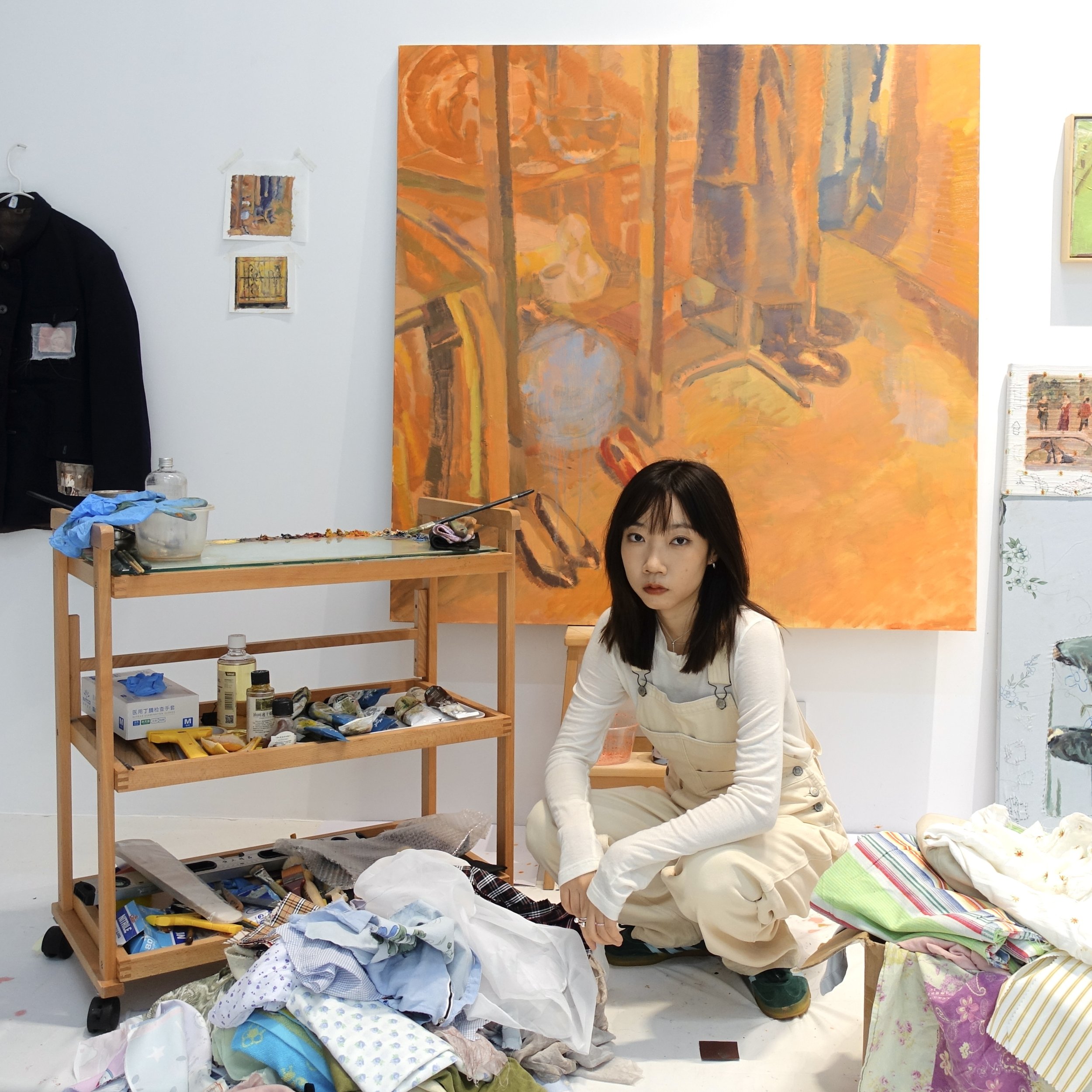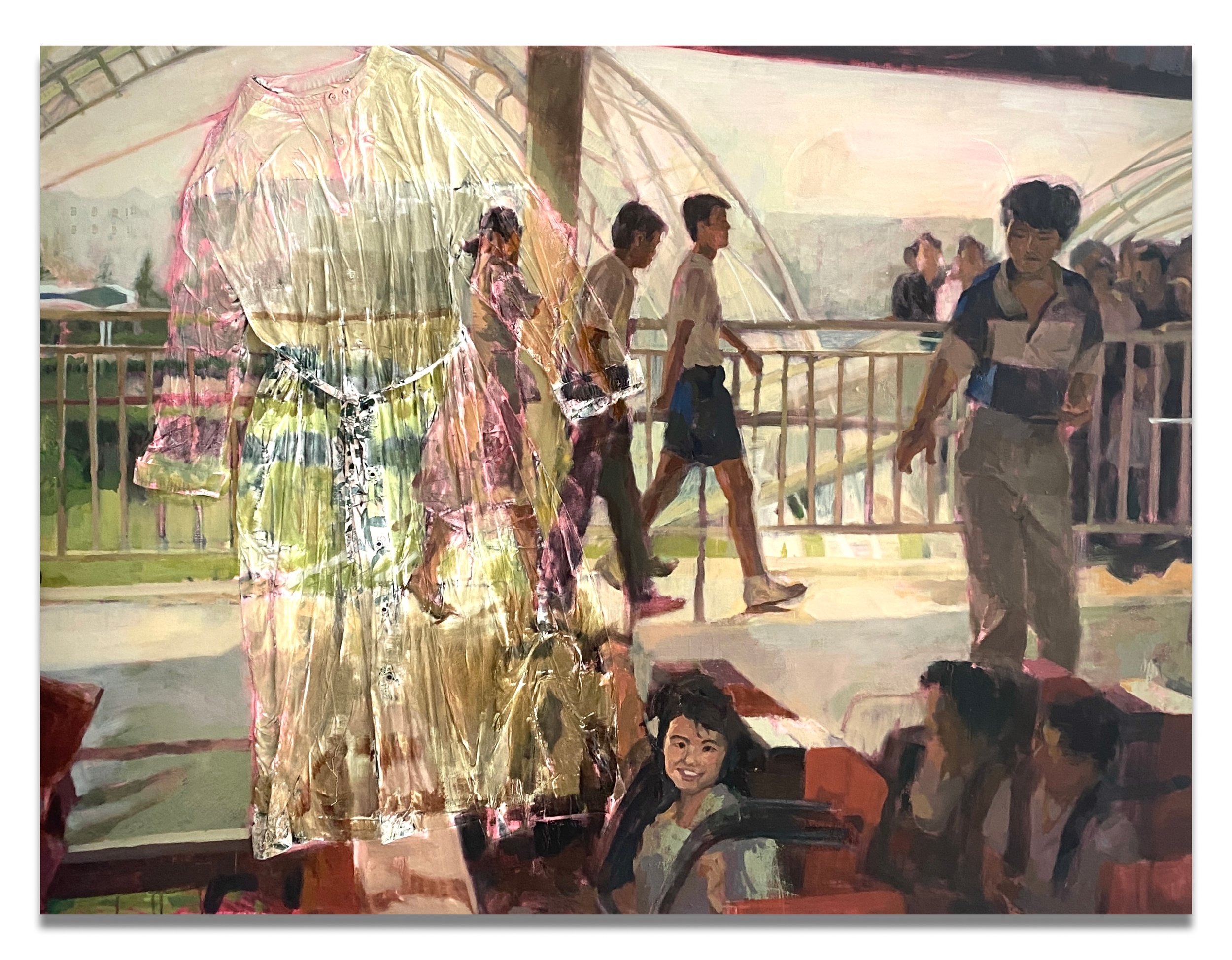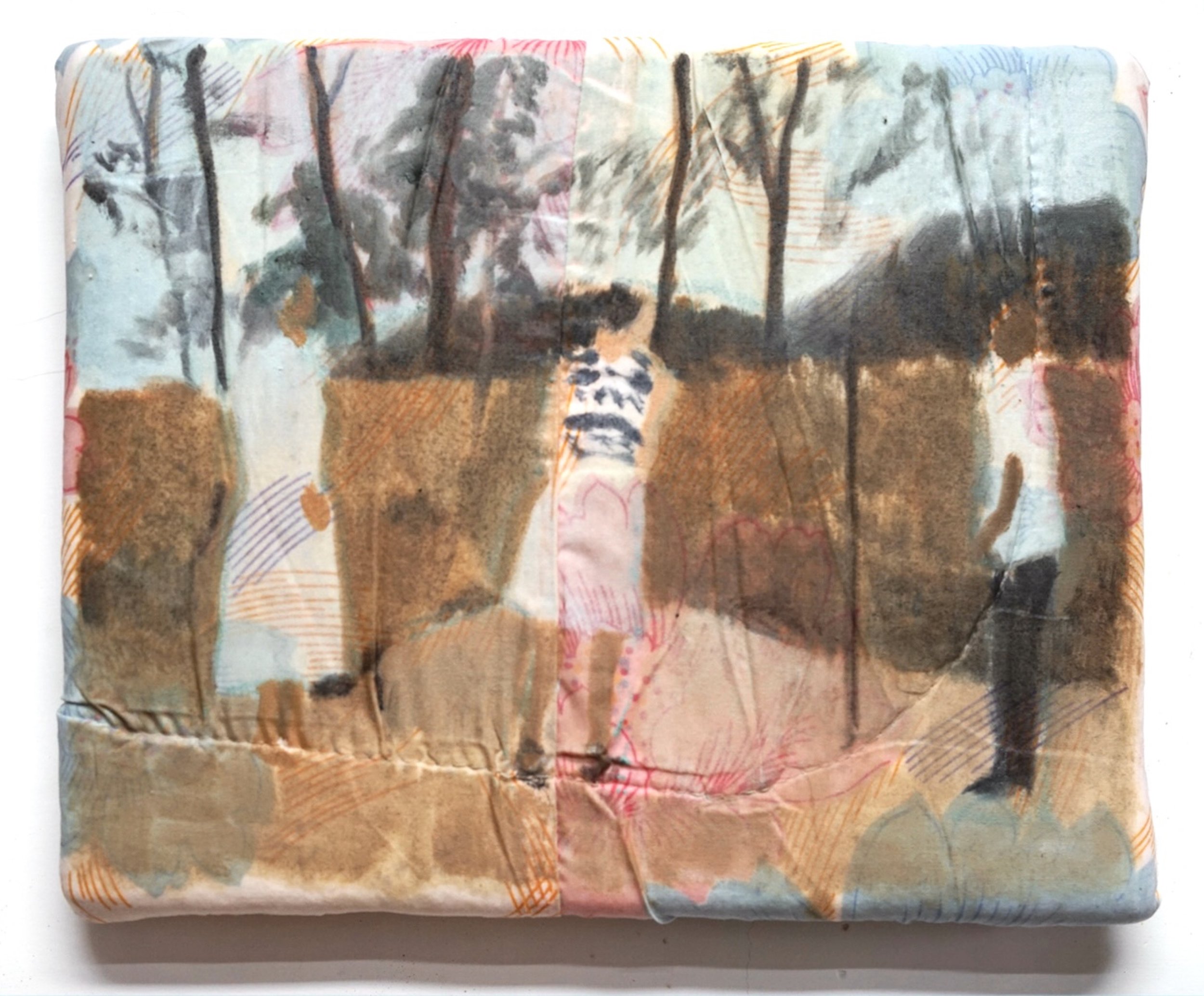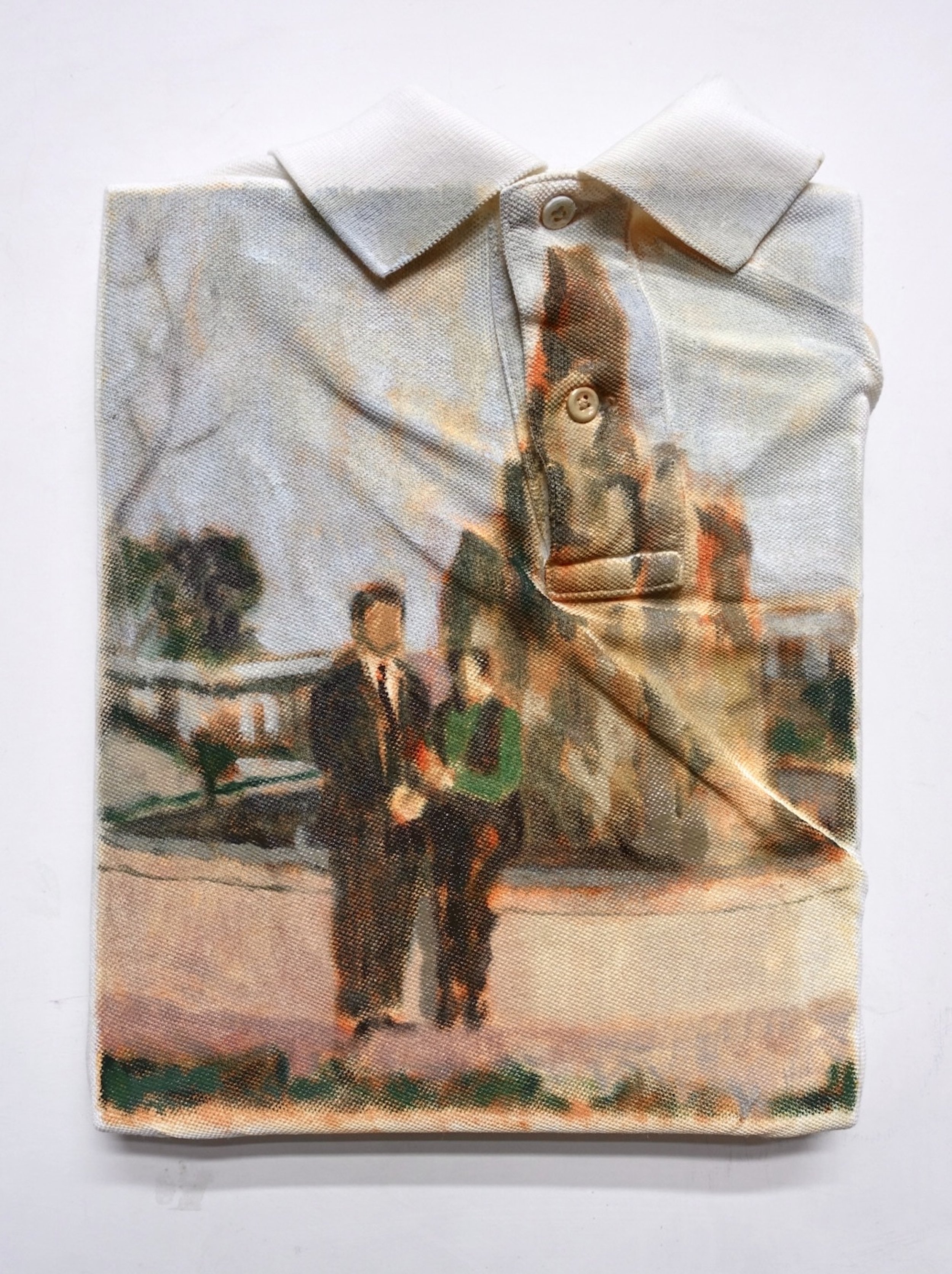
Xiaoyi Gao
Through Xiaoyi’s work, she explores the fluidity of personal and collective memory, using clothing and household fabrics as her canvas.
Xiaoyi one of ArtConnect’s Artists to Watch '24
In her book "In Memory of Memory," Maria Stepanova eloquently draws a poetic comparison between memory and a continually shifting tapestry. Much like a patchwork quilt, our memories are in a constant state of evolution, with new fragments being added and old ones discarded, causing the fabric of our memories to undergo wear and tear, renewal, and eventual disappearance.
Xiaoyi Gao's work delves into the fluid nature of both personal and collective memory, utilizing clothing and household fabrics as her canvas and pigments. She views her artistic approach as a contrasting perspective to the official, documented history—a more intimate method characterized by its frayed edges. Her sources of inspiration encompass her personal experiences, narratives passed down through generations, literature, snapshots captured from everyday life, family photographs, and cinematic references. Her aim is to unveil the captivating essence that eludes direct documentation. Xiaoyi searches for the subtle interplay between the ethereal and the material world, a dance that oscillates between clarity and haziness, gentleness and weightiness.
ArtConnect asked the winning artists to share with us a glimpse into their creative life to get a sense of their personal inspiration and artistic process.
How would you describe your artistic style and what inspires your work?
I think my artistic style is “intimate contemplation within folds and textures”. I enjoy communicating with different textures rather than smooth surfaces. My family is my greatest source of inspiration, and my artistic expression initially revolved around my upbringing and my family. Additionally, I have an affinity for local and regional cultures, and literature and films related to these themes serve as my inspiration.
“By choosing to reuse clothing items as surfaces for paintings, Xiaoyi Gao confers artistic value to the worthless and possibly accidentally chosen artifact. In the end, it is in the artist’s control to decide if the material objects are waste or treasure. Yet, the images themselves are powerful regardless of the additional conceptual layer connected to the material choice. The poetic way of depicting scenes in slightly faded-out muted colors and carefully considered fragmentary composition reveals a nearly marketing-like approach to drawing depersonalized conditional figures, making almost any viewer relate.“
Could you share a memorable anecdote or story from your artistic journey that has had a lasting impact on you?
I like walking without any purpose in my neighborhood. For a year, I lived in this apartment, from which a few blocks away there was a goodwill, a huge one. And walking and observing in that goodwill became my daily work-out.
A thrift store for me is like a huge collection of arts. I always spent time going through those chairs, tables, lamps…and kept being amazed by golf jackets, scarfs, heels, pillow cases given away by someone, someone I don’t really know. But somehow I could picture their life by seeing the objects they had used. And this became a huge inspiration of my practice. It was from that year, I started using household fabrics and clothing as my major materials.
What emotions or messages do you hope to convey through your work, and why are they important to you?
Each of my pieces often carries a slightly different set of emotions that I aim to convey. However, I understand that the moment an audience lays eyes on the work, something will be stirred within them. Fabric is a fascinating medium; it's like a unique language that can be universally understood.
Fabric is a fascinating medium; it's like a unique language that can be universally understood.
Even if someone is not well-versed in art, they have worn clothes in their life. I want viewers to be reminded of the softness of the quilt they used as young children when they touch a cotton fabric. I want them to recall a morning in their childhood home when they see the collar of a blue button-up shirt, similar to what their father once wore. My work revolves around the intimacy that we've all experienced.
Can you talk about a specific piece or series that holds a special significance to you?
The artwork "Artificial Lake" was inspired by a photograph I came across of my grandfather when he was a young man. In the background, there was a typical Chinese-manufactured landscape, which was widespread throughout China, particularly during the '70s to '90s. In a way, it symbolizes a collective memory of a generation.
The two clothing pieces in the artwork represent the most typical attire for Chinese men.
This piece, for me, represents the convergence of an individual's face, which signifies one's identity, with societal and temporal elements or a collective symbol, in this instance, clothing.
What does it aim to touch on?
The relationship between personal memory and society.
Can you describe your creative process and the themes or concepts that drive your work?
I would condense my scattered thoughts by writing and sketching. Then, I would plan accordingly based on these. Additionally, observing people's lives is also a part of my work.
Of course, many films and novels are also quite inspiring to me because they may sometimes resonate with what I want to express.
How do you stay motivated and inspired in your artistic practice?
Talking to my artist friends and reading and watching art interviews. Additionally, I enjoy reading novels. I believe that artists and novelists share certain similarities in many respects, and I am often inspired by novelists as well.
How do you balance your artistic career with the business aspect of being an artist?
I teach part-timely, create illustrations and designs for small business while also selling my artwork. Balancing time in the studio with time for others can be challenging at times, but I try to keep a consistent rhythm.
How do you see the role of contemporary art in today's society, and how do you see your work contributing to this?
I think my work in some aspect is very “boring” for modern people. There are too many interesting options to look at nowadays, youtube, tiktok, IMAX movies…Who would spend time staring at a piece of an old shirt? I think I am not interested in being competitive with creating special effects that we have not seen. Yet, my work opens a gateway to look at things that we had seen and touched everyday and for countless times, from a different angle.
Anything else you would like to add?
"Moreover, not writing a novel (or not having written a novel) may be a smart and efficient way to get through life. Nevertheless, if you still want to write a novel, feel that you must, then go ahead and write that novel, and keep writing." — Haruki Murakami
I believe the same applies to art.
See more of Xiaoyi’s work






